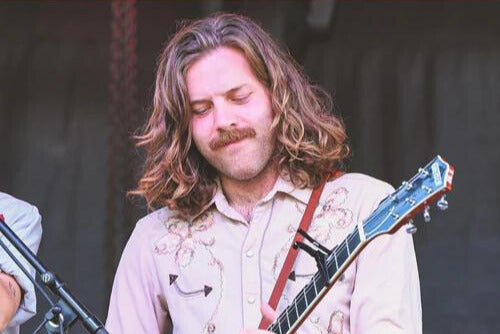Nashville Numbers (and why the capo is your friend)

Confession: There was once a time when I thought that using a capo was cheating. I believed that it was nothing more than a spring-loaded hack, dreamt up by someone who didn’t think they had time to learn more than G-D-C in root position, or without the stamina to clench barre chords up the neck. Fast forward to today, and I’m a proud capo carrier, in-fact I don’t leave home without it (phone-keys-wallet-capo)! What brought on this change of heart? JAMS. The more I collaborated with other musicians, the more possibilities I started seeing for how the capo could be used to enhance arrangements, and add a variety of textures by playing in root-position farther up the neck.
Aside from making root chords easier to play in those pesky keys with too many sharps and flats, I’ve found that by capo-ing into a place where I can play familiar chord formations it’s been easier to learn songs on the fly. But I’d be remiss if I didn’t give the bulk of the credit to a handy tool that’s helped simplify communication between musicians: the Nashville Number System.
For those that don’t know, the Nashville Number System is simply a method of using numbers to name chords rather than letters. It’s really not all that different from the roman numerals and figured bass used in classical notation for centuries, but at some point Nashville musicians got the credit for popularizing it.
Here’s how it works:
- Let’s say you’re in the key of C. We’ll assign the C chord the number 1. The D chord is 2, E is 3, and so on and so forth.
- Without getting too deep in the weeds of music theory, the 1 chord, the 4 chord, and the 5 chord (or C, F, and G) are the most common chords used in popular music, and the 6 chord (A), is also common, and will be a minor chord.
Now, there’s a whole lot more you can learn about chord theory (lots of songs use chords other than the standard 1-4-5, and what about all of the minor keys?), but that’s the basic idea. Once you crunch the Numbers on all the campfire strummers you know, you’ll see the same 1-4-5 patterns over and over, regardless of key. Over time, you’ll even start to be able to pick up these simple chord movements by ear.
But back to capos. The first thing you learn about a capo is that if you put it on a given fret, all your chords get higher, changing the key of the song. If your capo is on fret 2, your G chord becomes an A, etc. This can get confusing real quick, so we’ll use numbers instead. By simply memorizing the 1-4-5 and 6 chords in a few keys, you can play in any key, anywhere on the fretboard. For example, the C, F, G, and Am chords can be transposed up to the key of D with the capo on fret 2, or the key of E with the capo on fret 4. This is sometimes referred to as playing “out of C position”. If you repeat the process for the key of G (G, C, D and Em) and the key of D (D, G, A, and Bm), you can play in any key using all open chords, and without moving the capo too far up the neck.
Let’s look at a couple of examples: Let’s say you’re in a jam session and the keyboard player calls a tune in Bb. None of the chords in Bb are easy to play, and even if you know where to put the capo, you’ll still have to be doing a lot of math in your head to transpose each chord. Instead, you reason that to play in the key of Bb, all you have to do is shift a G chord up 3 frets, so you put the capo on the third fret and play chords out of “G position”. The keyboardist gives you the chords in the Nashville Number form, and neither of you has to do any transposing.
Here’s another one: You’re playing a song in C, and there’s another guitar player in the band. You want to add some variety to the arrangement, maybe expand the tonal range, so you get the second guitar player to capo all the way up on the fifth fret, where their G chord shape will correspond with your C. They play out of “G position” and you out of “C position”, and you transpose the chords easily by using Nashville Numbers.
If this is making your head spin, no worries, chord theory can be a real beast to tame. There are loads of great resources on the internet to help you out and take you further down the rabbit hole, here are some of my faves:
Guitar Chord Theory - The Complete Guide
Chord Music Theory 101: A Beginner’s Guide
---
Rob McLaren is a guitarist and lover of all things stringed, you can catch him playing guitar with Union Duke or picking the banjo with his bluegrass outfit the Barrel Boys
Want the amp experience everyone is talking about? Pre-order your Jamstack 2 amp today!



